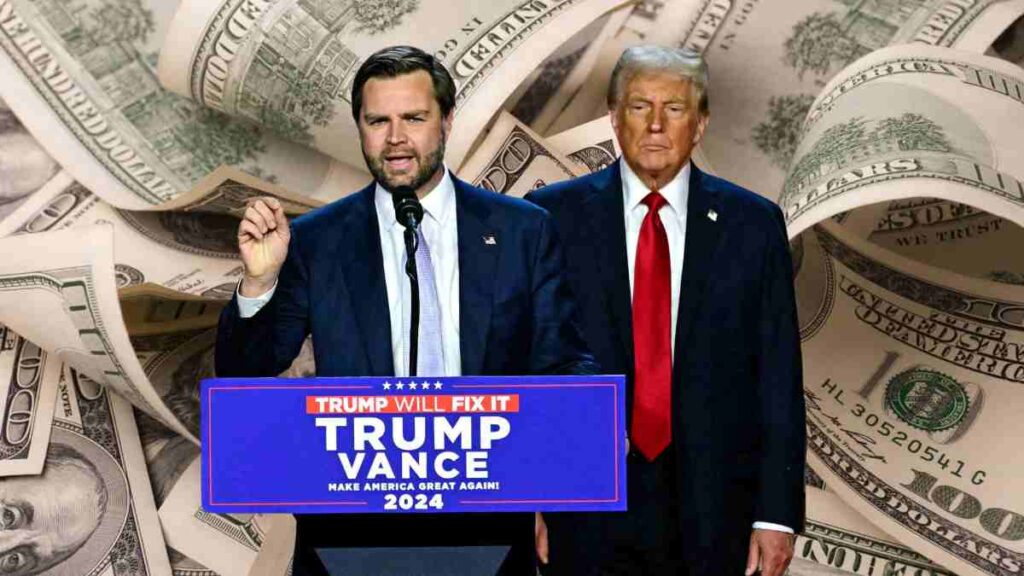After Donald Trump and JD Vance’s victory in the recent elections, one of the campaign promises that has drawn the most attention is the proposed increase in the Child Tax Credit, which Vance pledged to raise to $5,000. In his statements, the newly elected Vice President defended this proposal as a means to ease the financial burden on families. However, now that the election has been won, the big question is whether he can actually implement it and what impact this measure would have on the federal budget.
Throughout his campaign, JD Vance repeatedly emphasized his intention to increase the Child Tax Credit from the current $2,000 to $5,000 per child. Vance argued that this substantial increase would benefit families across income levels, including both low-income and higher-income households. He also proposed removing the income cap that currently reduces the credit for individuals earning over $200,000 per year (or $400,000 for couples).
JD Vance’s proposal: a $5,000 child tax credit
Vance envisions a family support system that doesn’t consider income as a factor, believing that every family should receive the same level of financial support. This aligns with his “pro-family” philosophy, which, according to him, aims to benefit all American families with children. However, while the proposal sounds promising, it raises significant concerns regarding its cost and feasibility.
How much would this measure cost?
According to estimates from the Committee for a Responsible Federal Budget, Vance’s proposal could add between $2 and $3 trillion to the national debt over the next decade. This massive cost arises because such a significant increase in the Child Tax Credit would require an enormous federal expenditure.
Additionally, Vance has not clarified whether his proposal would be fully refundable, meaning whether families would receive the full credit amount as a refund, even if they do not have enough taxes owed to offset it. This is a critical point since a fully refundable credit would be considerably more expensive. The lack of clarity on this aspect has led some economists to question the actual feasibility of the measure.
Marc Goldwein, policy director for the Committee for a Responsible Federal Budget, noted that without a detailed plan, it’s challenging to calculate the exact effects of the proposal on the federal budget. Implementing a $5,000 credit without comprehensive analysis could pose a long-term fiscal risk, impacting federal sustainability.
Can JD Vance fulfill his promise?
Now that JD Vance holds a position that enables him to push his proposal forward, there are numerous obstacles that could prevent its realization. The measure would need congressional support, and concerns about the federal deficit could make it difficult to gain approval. Furthermore, some critics point out that Vance did not support a recent proposal in the Senate that aimed to expand the tax credit for low-income families.
His lack of support at that time has left some questioning his true commitment to this issue.
Senator Ron Wyden, one of the main advocates of the failed credit expansion, stated that if Vance were genuinely committed to supporting working families, he would have backed that earlier proposal. Wyden has expressed skepticism about whether Vance can actually follow through on his promises now that he is in power, despite his pro-family rhetoric.
Economic relief for families, but would it effectively encourage birth rates?
Aside from financial support, Vance has promoted his proposal as a tool for encouraging higher birth rates in the United States. However, several economists caution that while financial incentives can help offset certain costs, they usually do not significantly impact decisions about having more children.
In reality, the total cost of raising a child in the United States to age 18 is estimated to be around $240,000, so while $5,000 a year provides some relief, it does not cover all expenses. This limitation makes the measure’s potential impact on birth rates rather minimal.
Countries that have attempted to incentivize birth rates through financial benefits have seen temporary results, but the effect tends to diminish over time. For instance, Australia implemented a “baby bonus” nearly two decades ago, which initially led to a small uptick in births; however, the birth rate subsequently dropped again, indicating the temporary nature of such incentives.
Genuine family support or a populist measure?
JD Vance’s proposal for a $5,000 child tax credit is undoubtedly an ambitious promise that some see as a tangible form of support for families in a time of economic uncertainty. However, others view this measure as a populist strategy that, without strong financial backing, risks becoming an unfulfilled promise or an unsustainable expense.
The Trump-Vance administration will need to carefully weigh the fiscal challenges of implementing this tax credit. The coming months will be crucial to determine if Vance can actually turn his promise into a reality, or if his ambitious $5,000 child tax credit will remain an unfulfilled campaign pledge.
